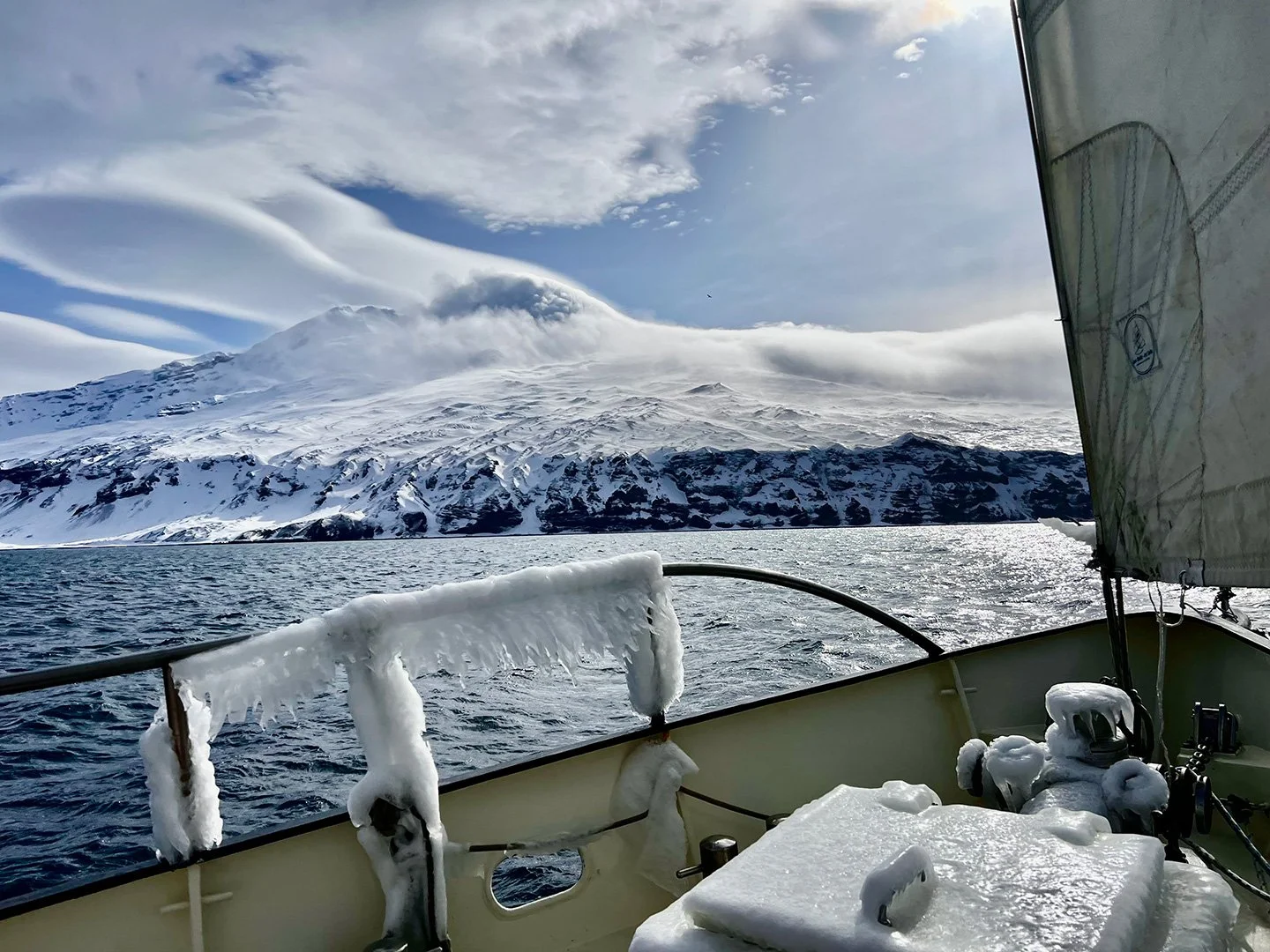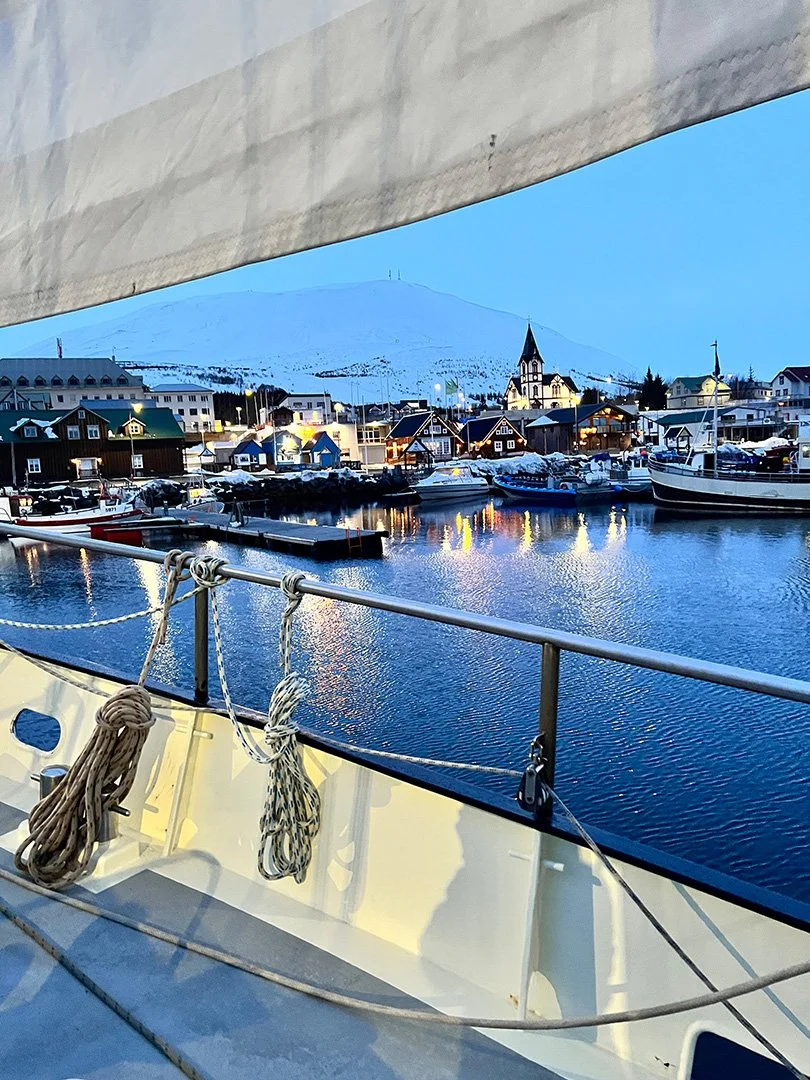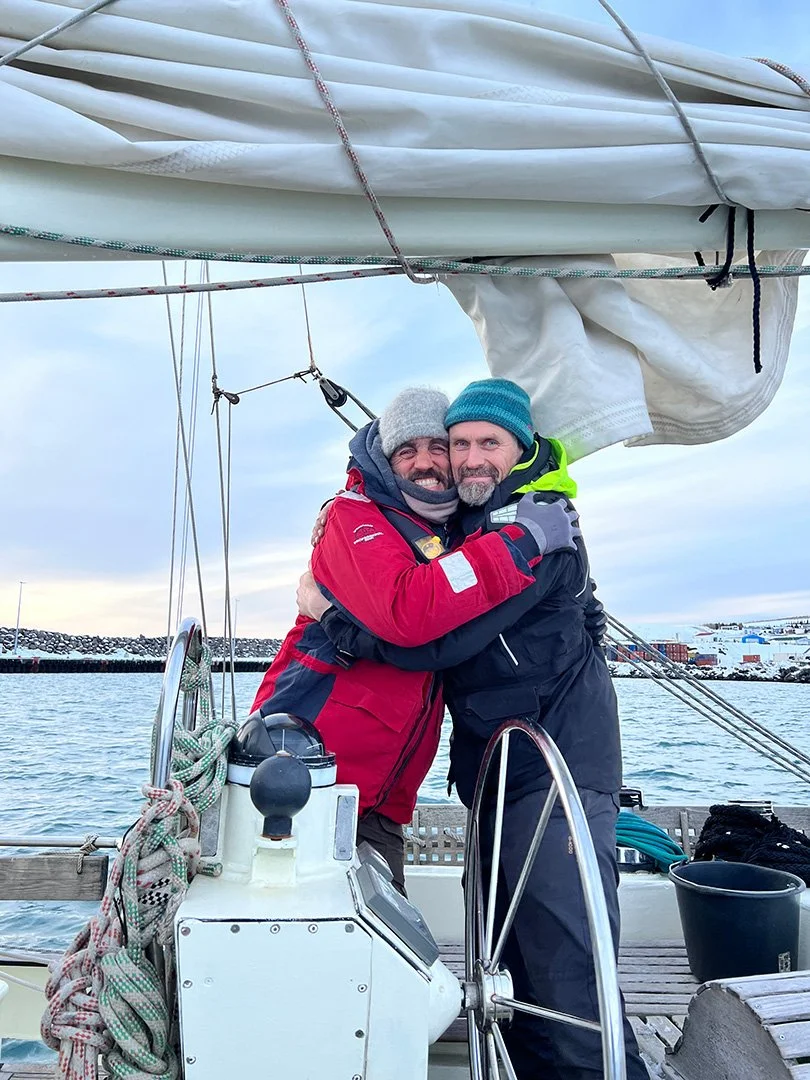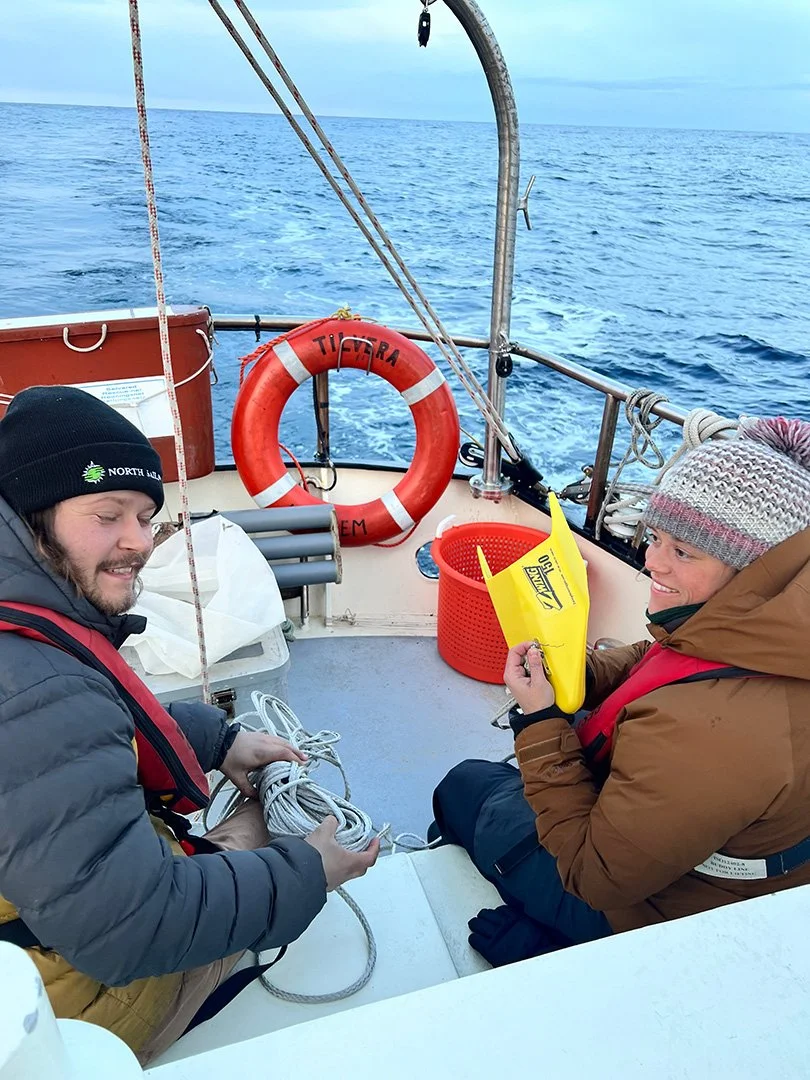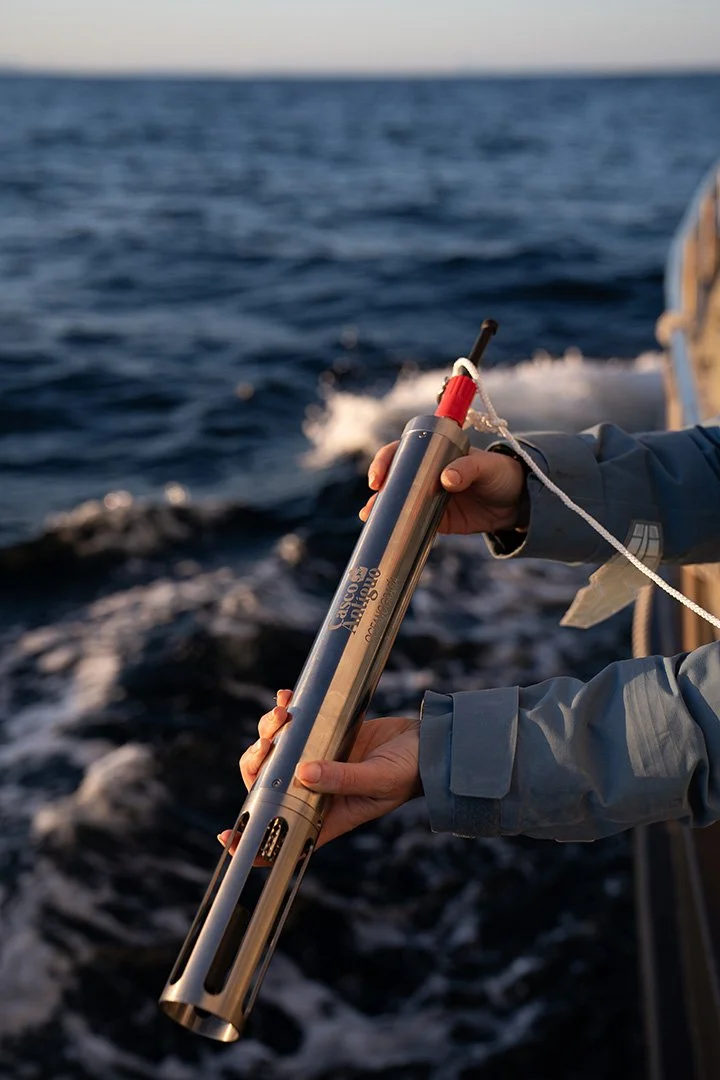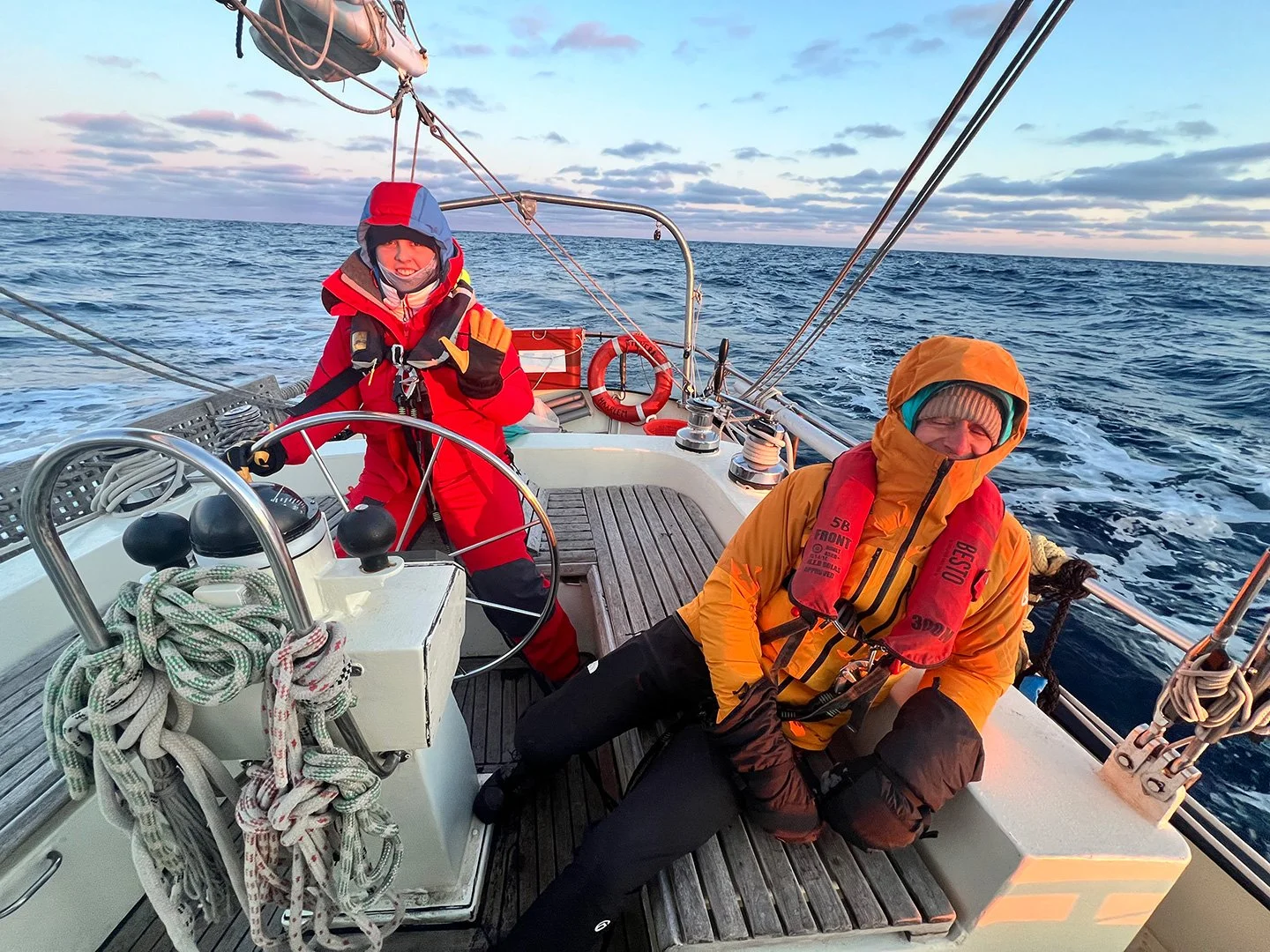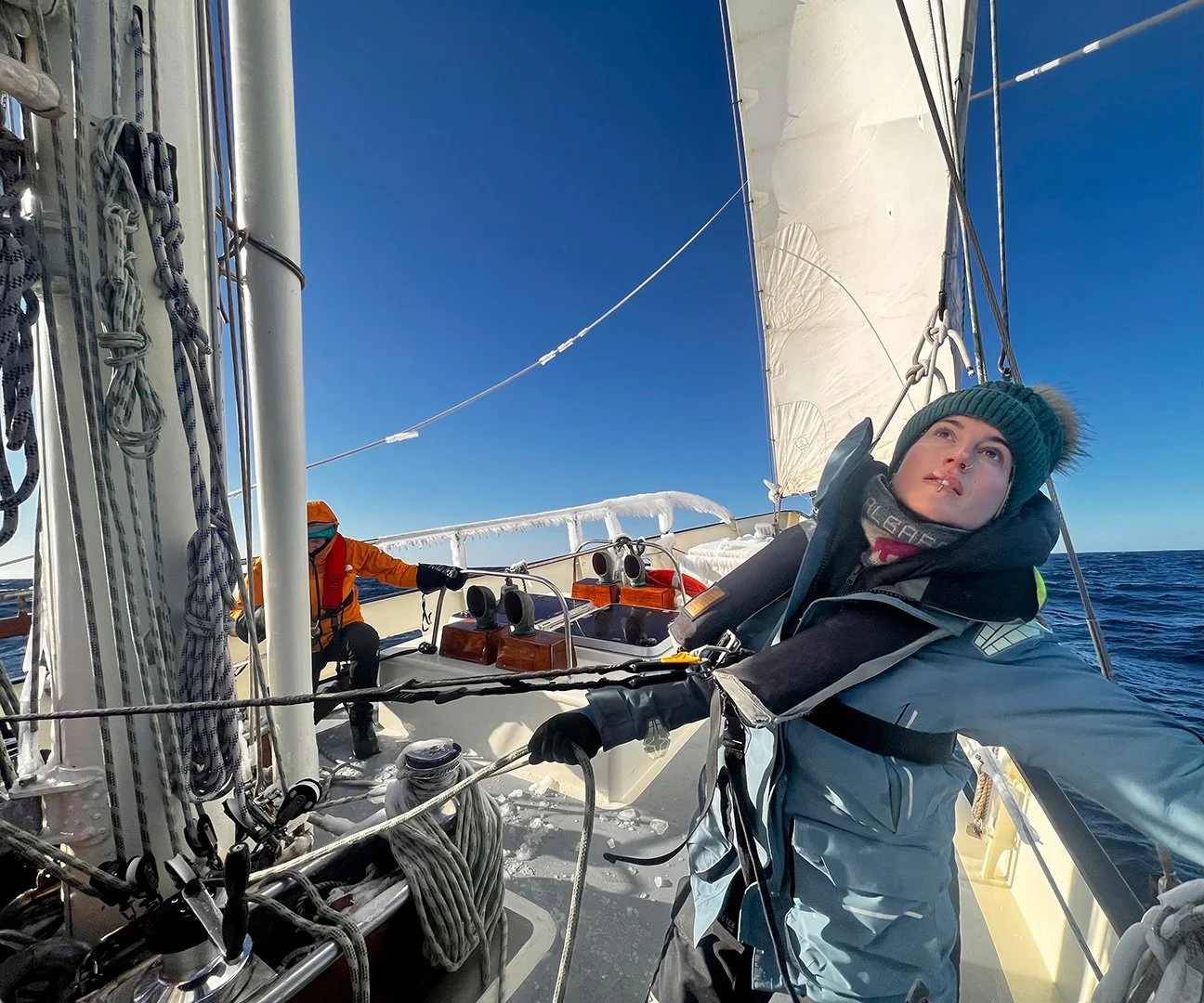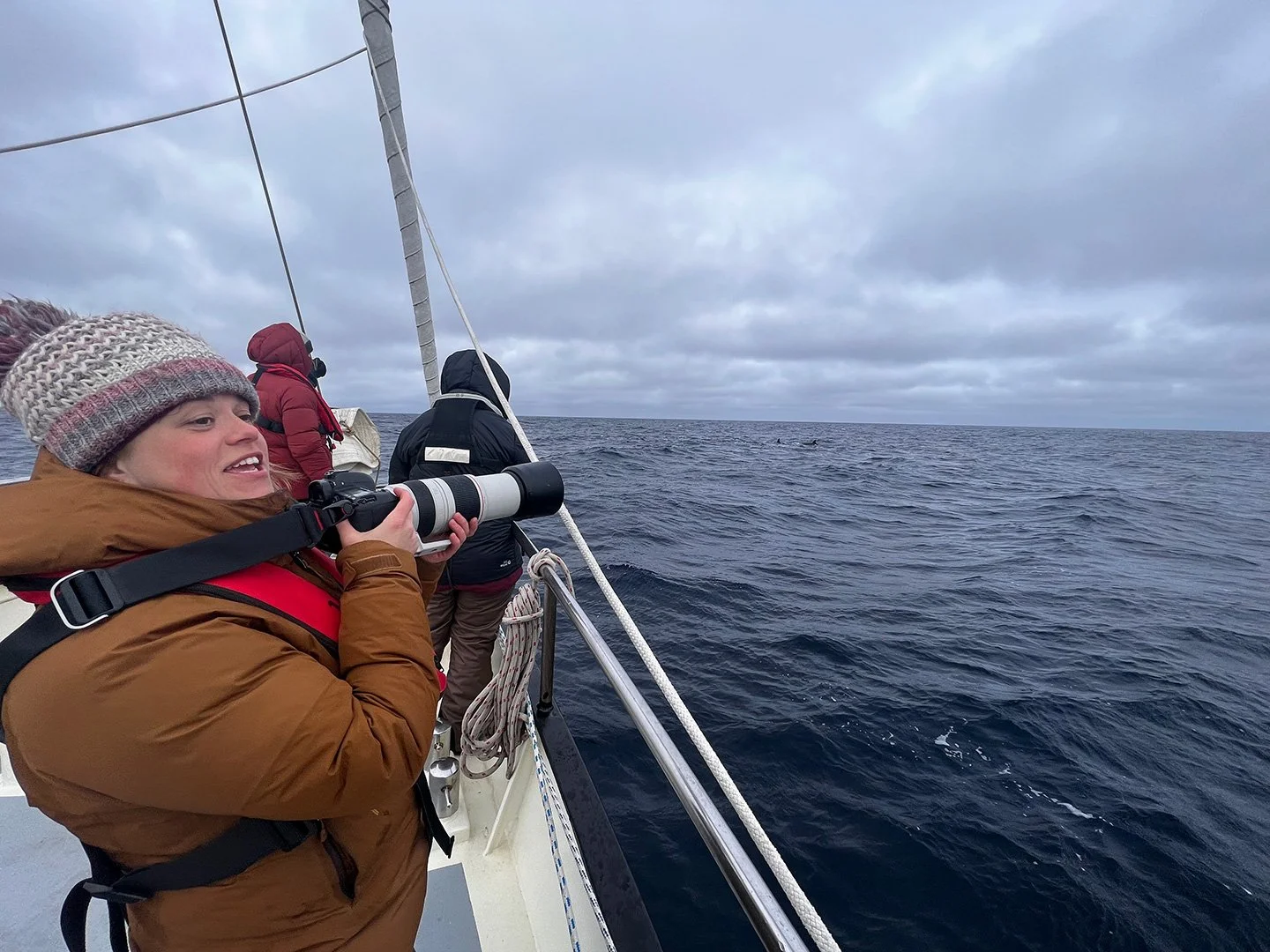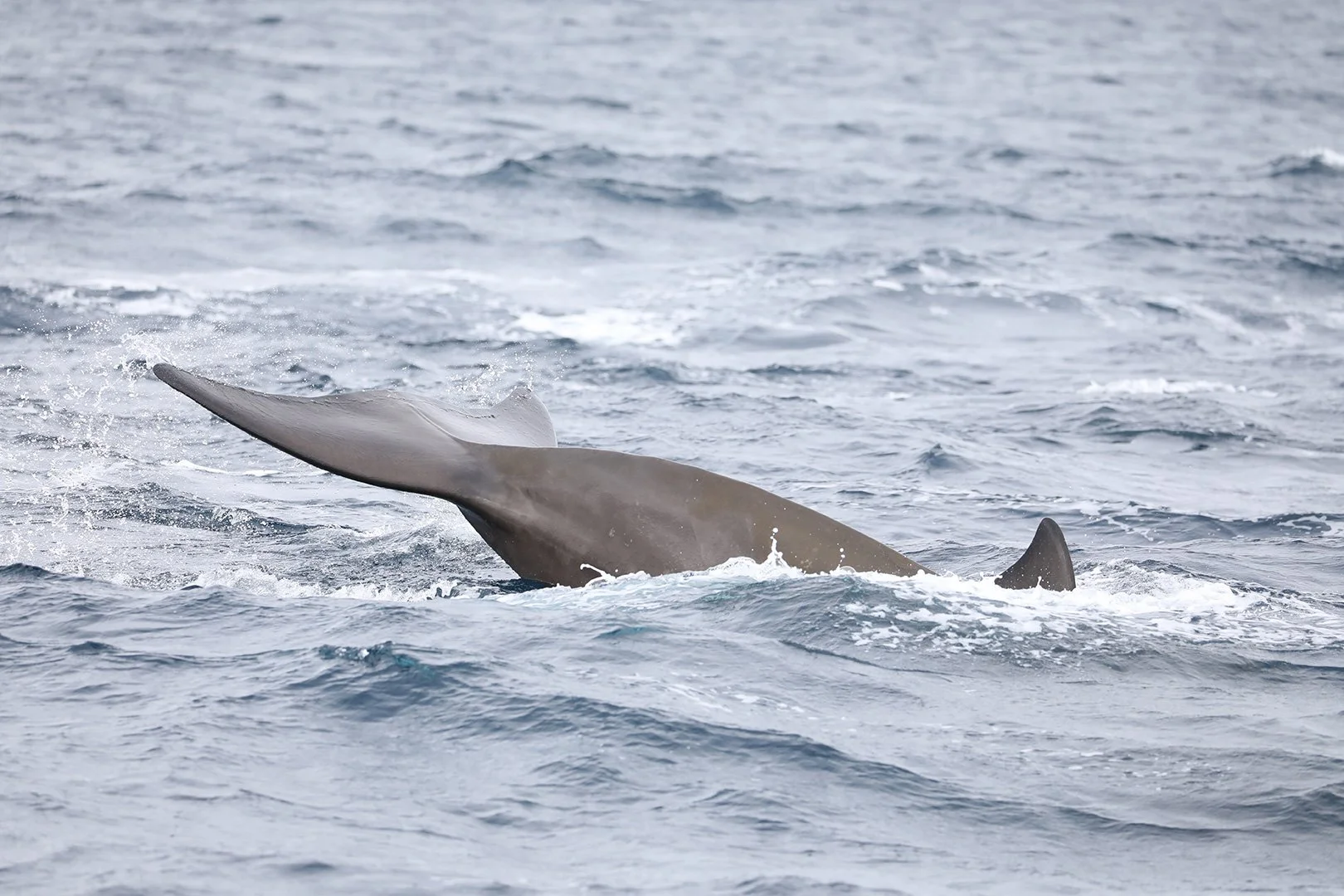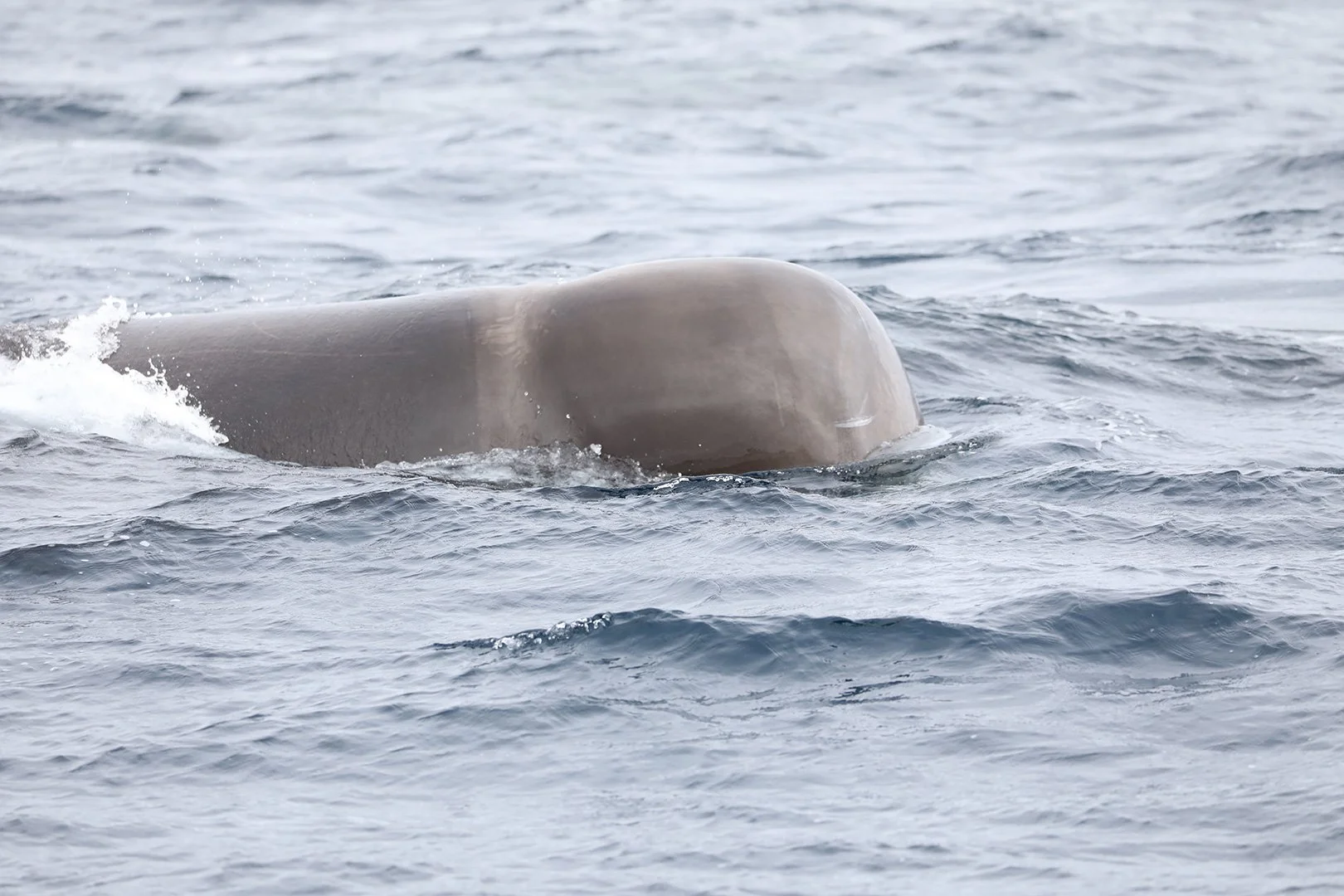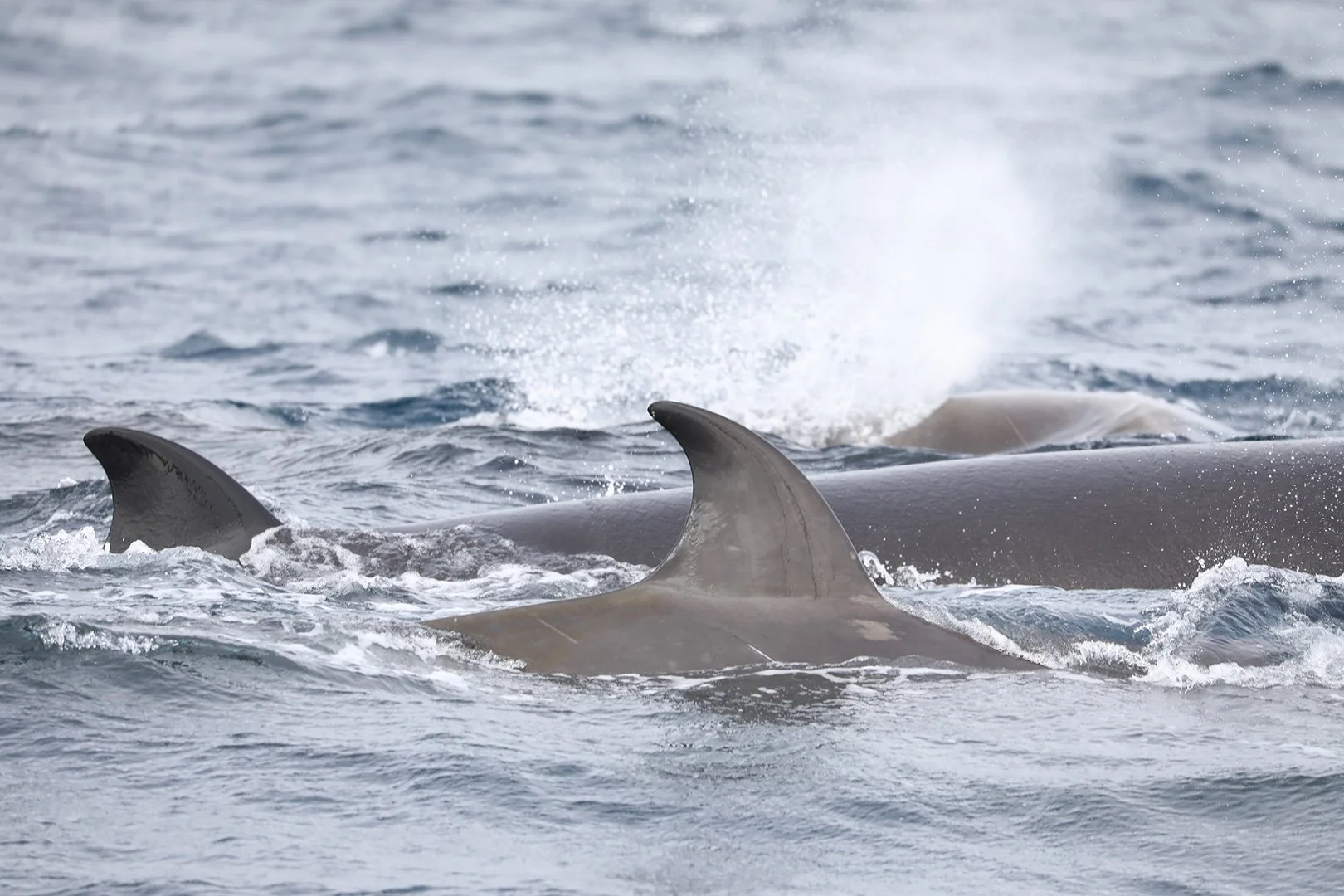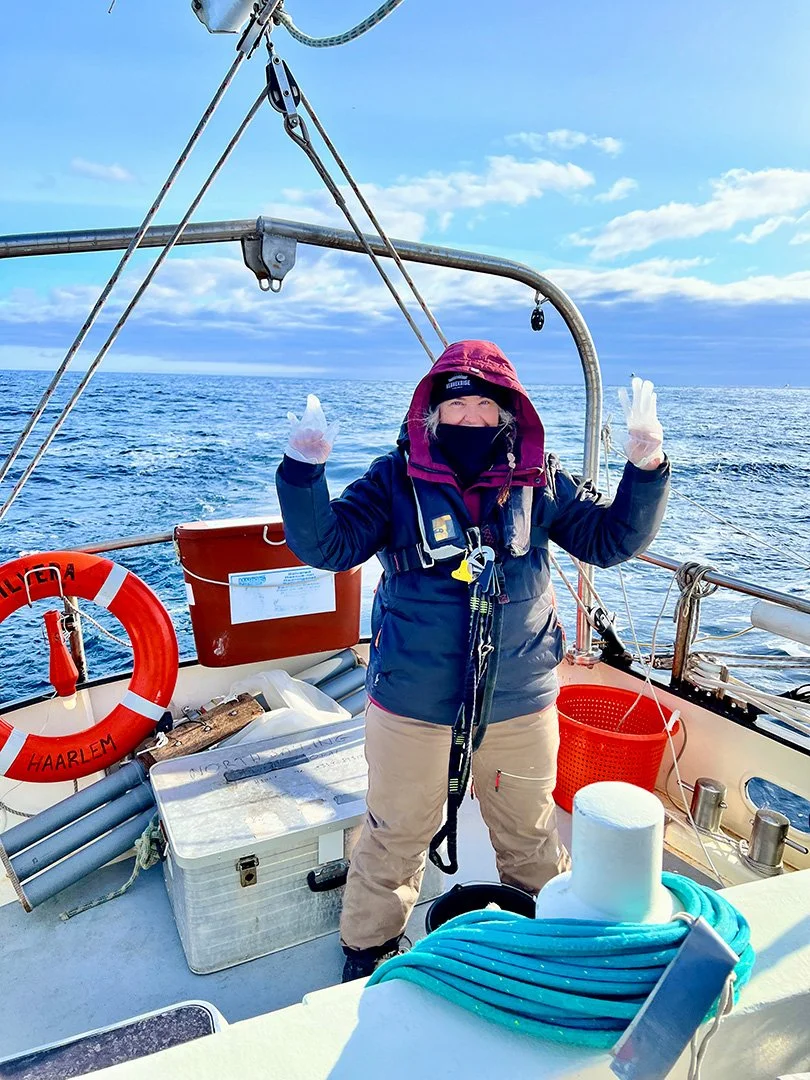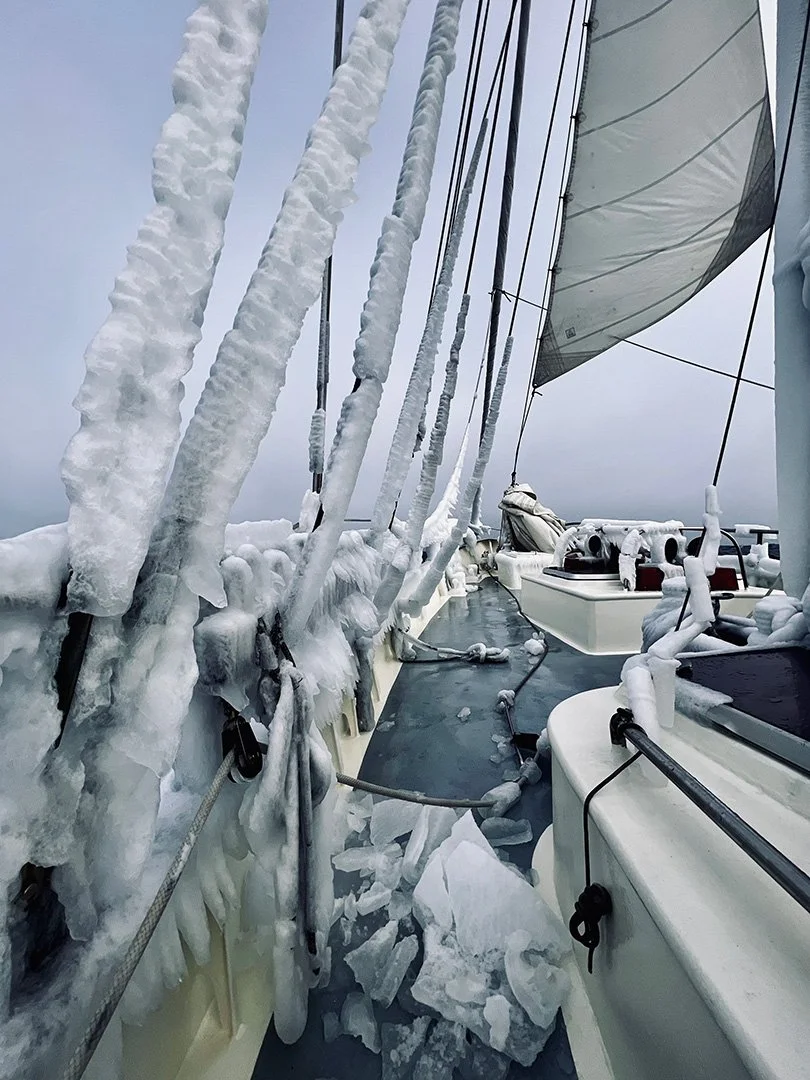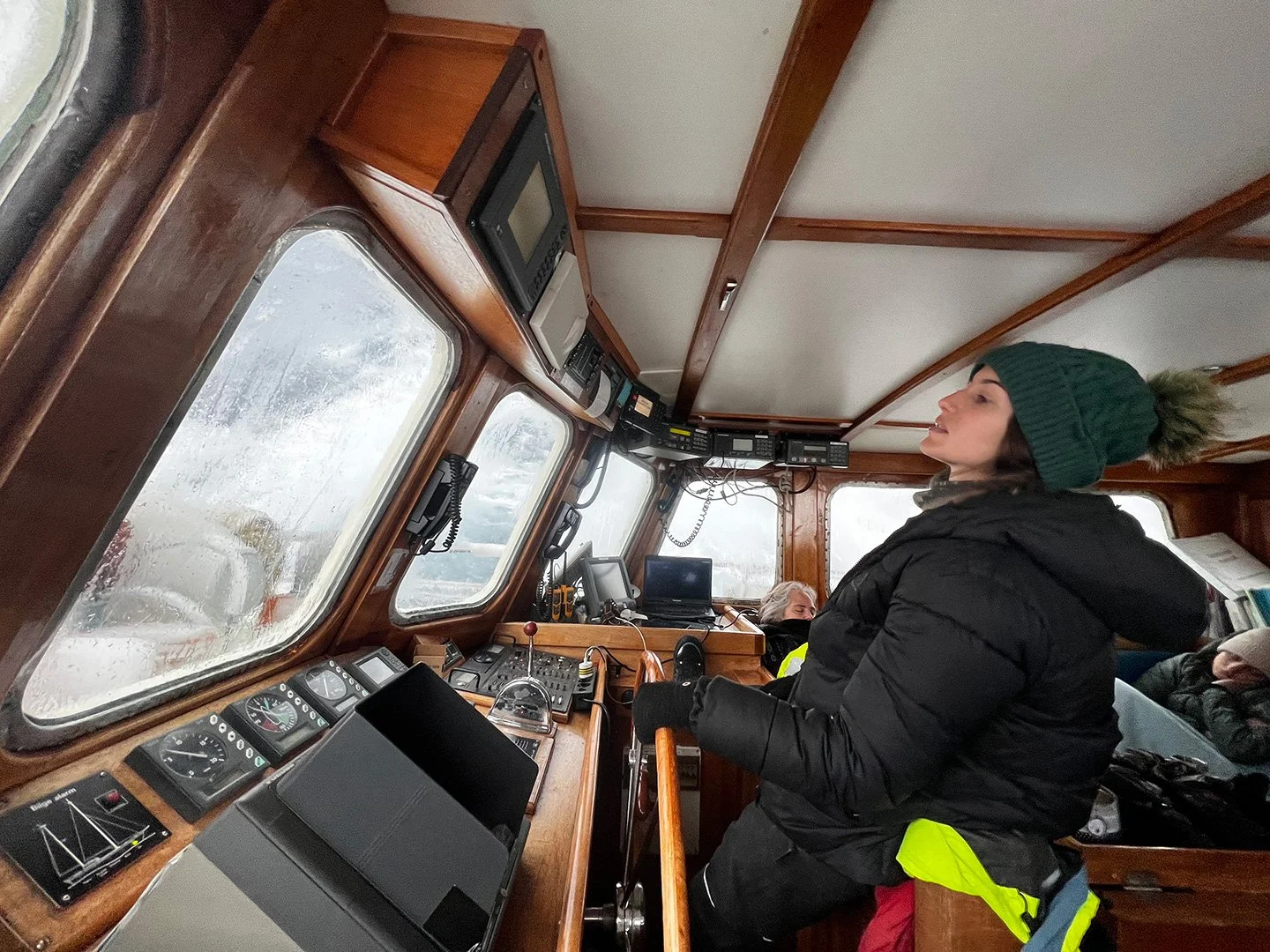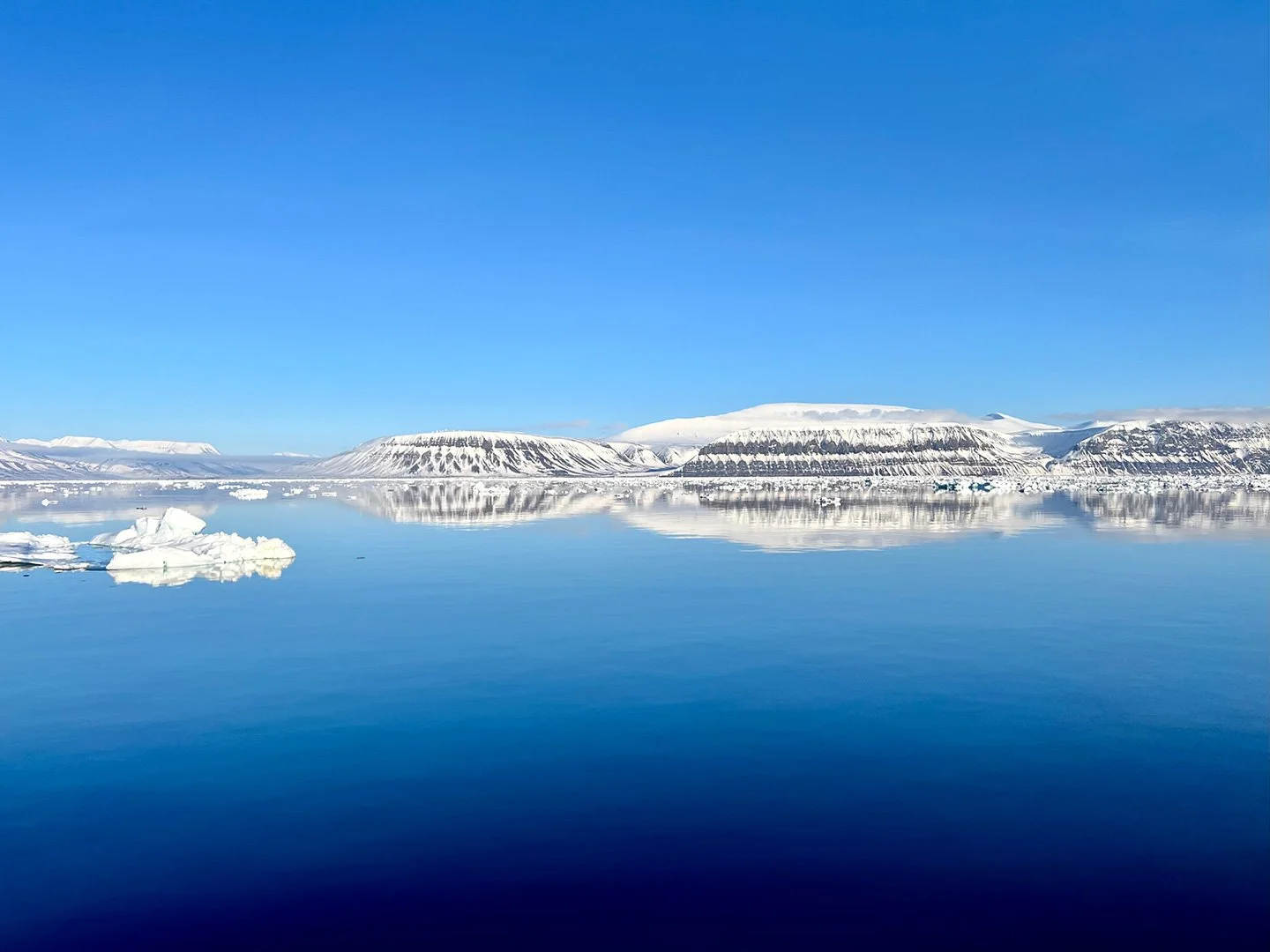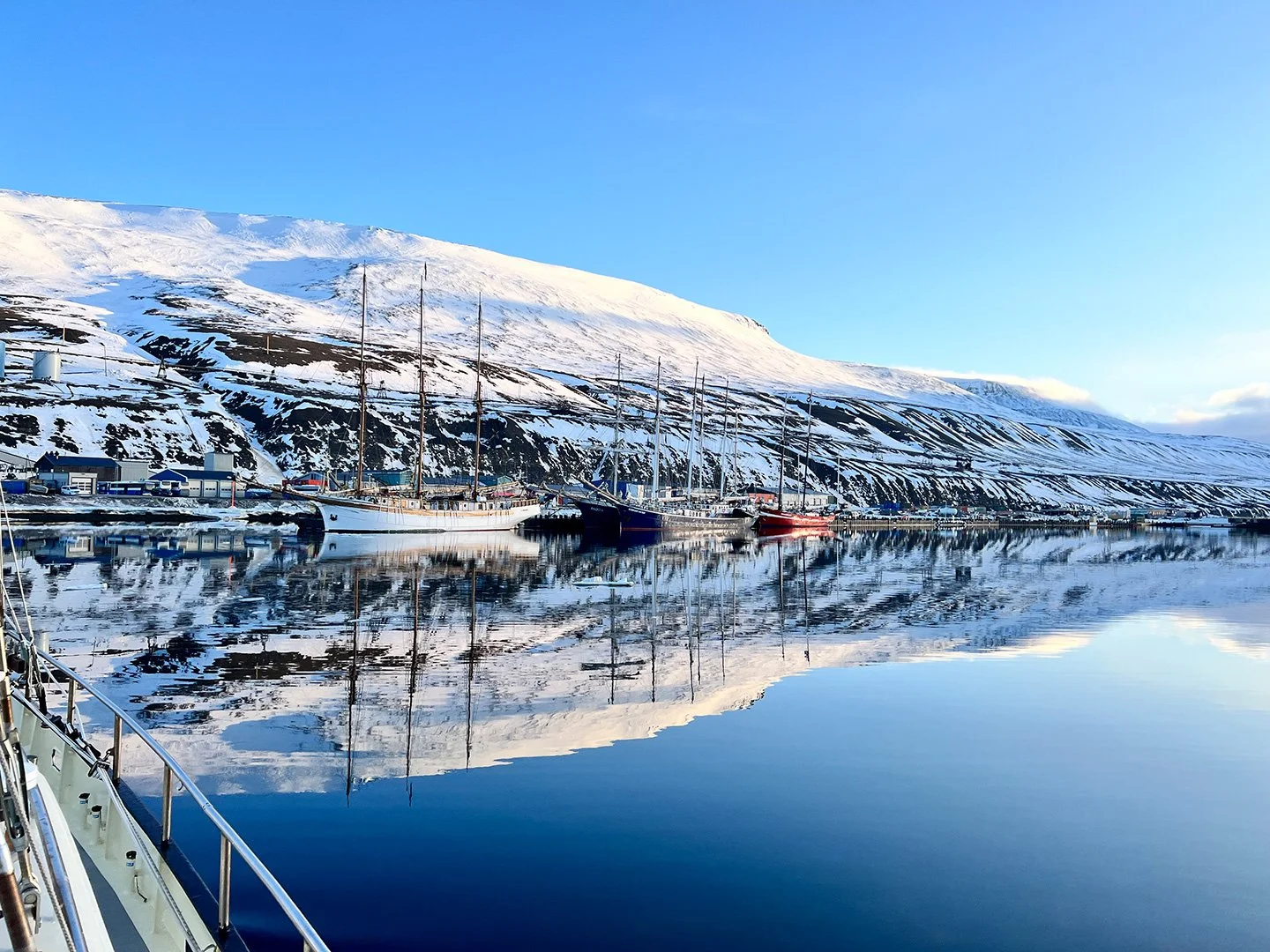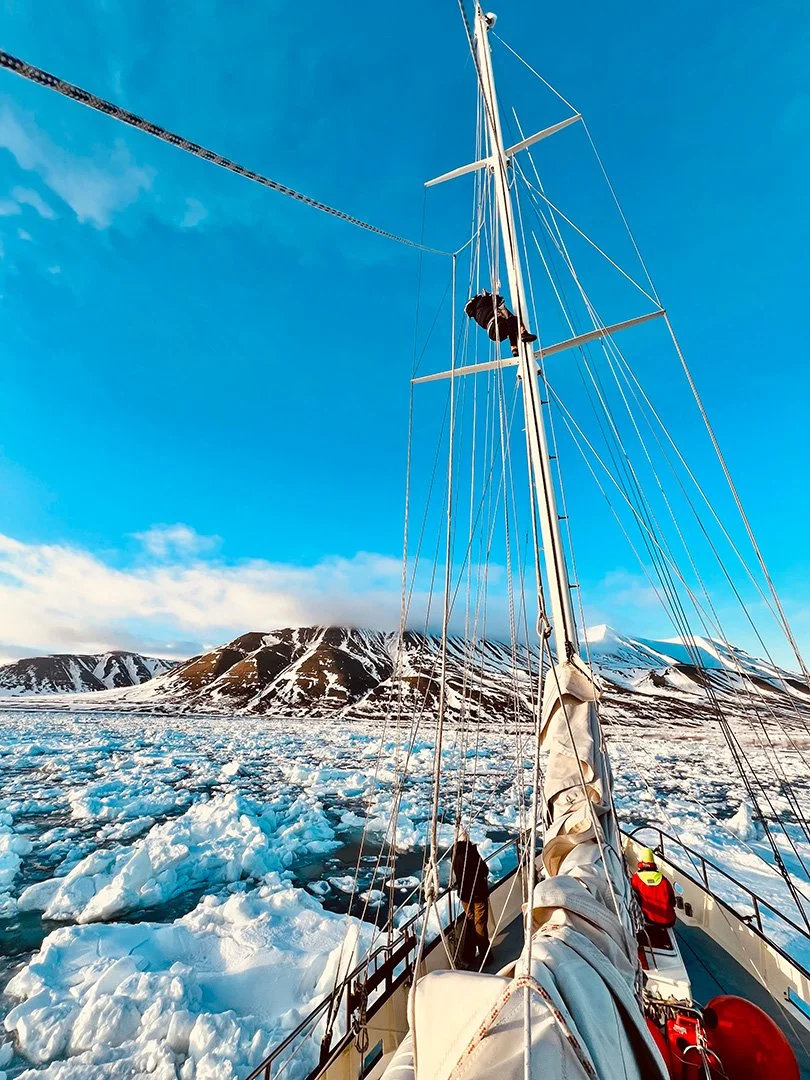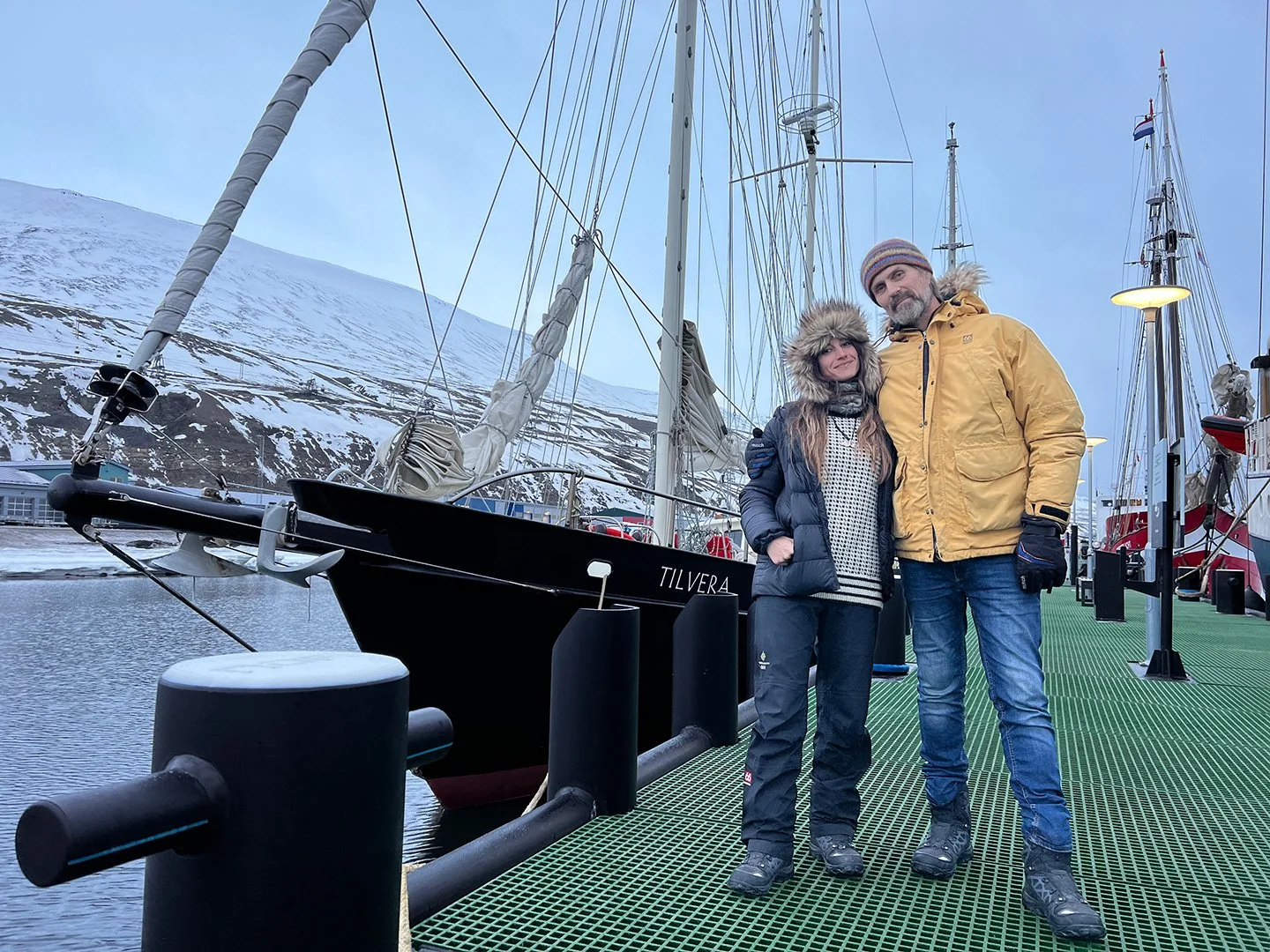Sailing Húsavík — Jan Mayen to Svalbard
By Safina Center Fellow Belén Garcia Ovide
“It is not about conquering the islands, but ourselves“
Approaching Jan Mayen Island. ©Belén Garcia Ovide
Mind-blowing experience sailing through in frozen seas, surrounded by warm hearts!
Very few people have dared to sail this challenging route towards Longyearbyen (78°degrees in Svalbard archipelago). Most people come here via Norway for a maximum of four days crossing. But on Tilvera, we always seek for something different, meaningful and challenging, which is often not the easiest, and not for everybody. Playing with the elements in mid April in this part of the Arctic Ocean is only an option for those who have extensive knowledge and experience in the Arctic, and are brave enough to stand up in every situation no matter in what conditions, to defend the ship and its crew. But it also requires a boat that has been designed for the extreme and that can handle all kinds of situations. This is exactly why Heimir and I chose Tilvera as a home and as an adventure platform.
Leaving Húsavík. ©Belén Garcia Ovide
Sam (left) and Heimir (right). ©Belén Garcia Ovide
On a mission to find The Northern bottlenose whales...
To make things even more challenging, we decided to use this unique opportunity to perform an important mission: to find and study one of the most mysterious and unknown cetacean species in the world, the Northern bottlenose whale.
On this journey we teamed up with our colleagues at HYPMO Project (based in Iceland). Despite the fact that bottlenose whales are some of the better-studied beaked whales, there is still a lot they don’t know about their habits and ecology, especially off the Icelandic continental shelf. Northern Bottlenose whales are among the cetaceans that perform the longest and deepest dives of any marine mammal (down to about 2,300 m). They do this in order to find prey, usually deep-water squids that live in these extreme environments. In order to perform these extreme dives, these beaked whales are specially adapted to support up to 250 times more pressure than in the air—equivalent to what your big toe would feel like if an elephant were standing on it—and to hold their breath for almost 2 hours. This lifestyle, linked to their elusive behavior and often offshore distributions, makes it very difficult for scientists to spot them and study them.
The HYPMO team know from previous acoustic recordings that Northern bottlenose whales may hang out in deep environments near Jan Mayen Island, where waters reach about 3,000 m depth. Yet, they haven't managed to report any confirmed visual sightings in this area, partly because of its difficult access and challenging weather conditions in spring. For this reason, Barbara “Babsi“ Neubarth joined our team on behalf of the HYMPO project with some scientific equipment. She successfully towed an autonomous recorder behind Tilvera and collected acoustic data for nearly 140 hours. The device was constantly recording underwater sounds and possible whale vocalizations. She also had a custom made dipping hydrophone for punctual sound recordings in case of whale sightings. I took the chance to bring some filters and a pump to try to get some environmental DNA samples for the eWHALE project, with which I am currently doing my PhD studies. Adittionaly, I could borrow a CTD sensor from a shop in Madrid called Casco Antiguo, which would allow us to measure depth, salinity and temperature of the water, down up to 1,500 m.
Testing the towing hydrophone. ©Belén Garcia Ovide
A CTD device, which measures water conductivity (salinity), Temperature and depth. ©ericazetatravel
Sailing from 66° to 78° North
In Iceland, the weather was already very harsh, unusually cold and still snowing a lot before departure, which made the last preparation of the ship pretty challenging. The constant low deep pressures passing by Iceland—which resulted in stormy weather—forced us to delay our departure for almost two days. Eventually, a short weather window came and we could leave Húsavík in relatively calm seas but soon out of Skjálfandi Bay we encountered severe swell; the remains from the previous storms. Luckily, we are on a sailing vessel so we could use the strong but favourable Northwesterly winds to set full sails and set our course straight to the North!
We had a bunch of beautiful people onboard. Some people had never sailed before in the open ocean, and some crew members became friends and part of the Tilvera community during last year's sailing season. Others were ocean ambassadors that already sailed with us during previous Ocean Missions expeditions. On this trip, we also had the honour to sail with Sam (son of Heinz Wutschke, former owner of the boat). Sam has been living and travelling in a van for many years, and now he lives in a community with his two kids and wife. He sailed with his father in Antarctica and several times around the world in “Anne Margaretha,” the previous name of Tilvera. Now, Sam wants to sail Tilvera to keep his father’s legacy alive and to support us on our project.
With these 14 adventurous souls onboard, we set a watch system of four hours on and eight hours off. Myself, Heimir, and Sam were the watch leaders. Yet, everyone participated in the navigation, setting sails during ice watches. We all now share a home for the next two weeks and it is our responsibility to safely deliver the ship to the North. So everyone gets excited about their new tasks and roles onboard!
Part of the team on the sailing duties. ©Belén Garcia Ovide
©Heimir Hardarson
Exploring around the remote island of Jan Mayen
The constant seven Beaufort force Northwesterly winds took us all the way to the remote island of Jan Mayen—650 km North - Northeast of Iceland—at a remarkable speed of 7-10 knots. Finally, the weather gave us a break and after three days the wind ceased when we approached the island. Between icy ropes, the remaining swell of the storms and an eternal sunset on the horizon, we saw the frozen island of Jan Mayen... With its giant 2,000 m tall volcano and isolated weather research station, Jan Mayen is a volcanic island in the midst of the Atlantic ridge, and it is well known because of its often harsh weather conditions. Therefore, despite its proximity to Iceland, not many people have ventured here.
But we are here for an important mission... to find Northern bottlenose whales!
04:00 AM: whaaaaaaaaaales!!!
Babsi screams and I run to stop the boat. Where?
A family of bottlenose whales breaks the surface about 200 m away. At least seven individuals, some rear their big square heads and approach us directly! They pass just in front of Tilvera, and I cannot believe this sighting! We wake everyone up. Babsi is taking pictures to identify each individual, while I am preparing the buckets with Annelie to try to get some water samples from near the fluke prints. The hydrophone is still recording! The animals were around for approximately 40 minutes! Then, we moved on.
We can't believe how lucky we were to have had these incredible encounters with these elusive animals. Despite rough seas and the time of year, bottlenose whales were encountered on 10 occasions. These sightings finally confirm the presence of these whales in this area. These rare events provide very valuable information for the ongoing research on bottlenose whales. Other groups were sighted the same day. The presence of diving birds and behavior exhibited by the whales suggest that the whales may be feeding close to the surface—a behaviour never reported before in these areas. Often, the whales were extremely curious with our towing hydrophone, following the boat, apparently checking out the towing line. We managed to filter the water samples for eDNA analysis—likely the first samples of this kind in this region.
After a wonderful sunny day full of whale encounters we don't have time to step ashore Jan Mayen, and another storm builds as we see the weather front quickly approaching. We go around the island and decide to anchor in a very relative “sheltered“ place, waiting for the storm to pass. That night, Babsi showed us the first acoustic recordings from our previous encounters which showed a multitude of clicks and buzzes! Click click..! Now everyone onboard is trying to speak “bottlenose language.”
After the night we are well-rested, even though wind had been blowing very hard from the south and dragging our anchor from time to time. It is time to leave Jan Mayen.
Photo identification of Northern bottlenose whales. ©Belén Garcia Ovide
Group of Northern Bottlenose Whales. ©HYPMO Project
Group of Northern Bottlenose Whales. ©HYPMO Project
Group of Northern Bottlenose Whales. ©Hypmo Project
Collecting water samples from whale fluke prints for eDNA sampling. ©Heimir Hardarson
Preparing eDNA samples for storage and testing. ©Belén Garcia Ovide
Understanding nature, reading the weather patterns...
There‘s only one option if we don't want to get trapped here and it‘s not the easiest one. The plan is to try to sail in between low pressure systems , although they are very close to each other so there‘s a chance to accidentally sail into the eye of the storm, if weather forecasts are inaccurate.
The next four days were wild and rough, yet fascinating. Keeping a close eye on the barometer to monitor our situation within the passing low pressures, we sailed through the gales, using the strong winds to reach as far as we could on our course to Svalbard. It was impressive to see Tilvera performing, surfing the average 5m waves in steady 35-40, sometimes 50 knots wind, in the wild and freezing arctic ocean. With full reef sails and the small storm sail, the passage went smooth without any mishaps, despite some seasickness... Thermal sensation reached about 37° below zero.
But sailing is always rewarding. After the gales, when everything was frozen onboard like an ice castle, the sun came again to remind us that the time to leave is now and that together we can overcome every challenge.
Tilvera covered in ice. ©Belén Garcia Ovide
Sailing through stormy weather. ©Belén Garcia Ovide
Navigating low pressure systems. ©Heimir Hardarson
Wandering the icy sea
Icy mountain peaks appear on the horizon. Sailing the last miles towards the archipelago, the wind dropped completely and later changed slightly to a light breeze coming directly from our nose. The remains of sea ice started to become the new landscape. Two days to go...
Next morning we were already in Isfjorden, and we explored the edge of the ice sheet for wildlife. It is 04:30 am. A huge walrus is resting in an ice floe while I steer the boat in the totally silent and calm sea with one hand, and hold the morning‘s first coffee with the other. Its sunny—the sea is just like a mirror and the mountains‘ reflections in the ocean surface are trippy.
Svalbard. ©Belén Garcia Ovide
We got inspired by the walrus and decided to drift around for some hours by the dreamy pack ice to get immersed in the landscape, before we reached Longyearbyen. We had a beautiful breakfast all together and listened to the sounds of the ice with the dipping hydrophone.
Luckily, the wind had been pushing most of the ice off the fjord prior to our arriveal, so we managed to reach the pier before the ice was too packed to sail through. When we arrived at the pier, we met old sailor friends and celebrated our successful journey.
Relaxing by the sea ice. ©Belén Garcia Ovide
Arriving to Longyearbyen port in Svalbard. ©Belén Garcia Ovide
Navigating sea ice. ©Belén Garcia Ovide
During the last two weeks we became small and vulnerable while sailing the imposing offshore Arctic Ocean. Thanks to the lessons from Mother nature, we challenged ourselves every day in the freezing cold and the steep waves, but most importantly, we practiced our humbleness and respect to our blue origins.
Belén Garcia Ovide and Heimir Hardarson at the Longyearbyen pier. ©Heimir Hardarson
Do you want to know more about our next adventure?
Soon we set sails with Ocean Missions in Svalbard for the Hope Expedition!
More info at: https://oceanmissions.org/

